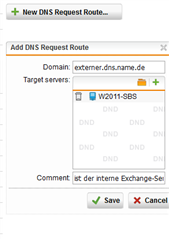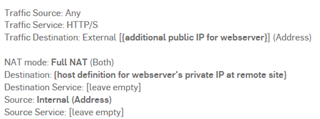Hallo,
habe hier eine feste öffentliche IP für den DSL Anschluß.
Wir arbeiten mit einer speziellen APP die über die feste externe IP auf einen Webserver zugreift.
Der Zugriff auf den Webserver vin unterwegs klappt ohne Problem.
Aber nicht vom internen Netzwerk aus.
Gibt es hier eine Möglichkeit das in der UTM einzustellen, damit auch vom internen LAN aus der vermeintlich externe Server erreichbar ist?
Gruß, Herry
This thread was automatically locked due to age.








